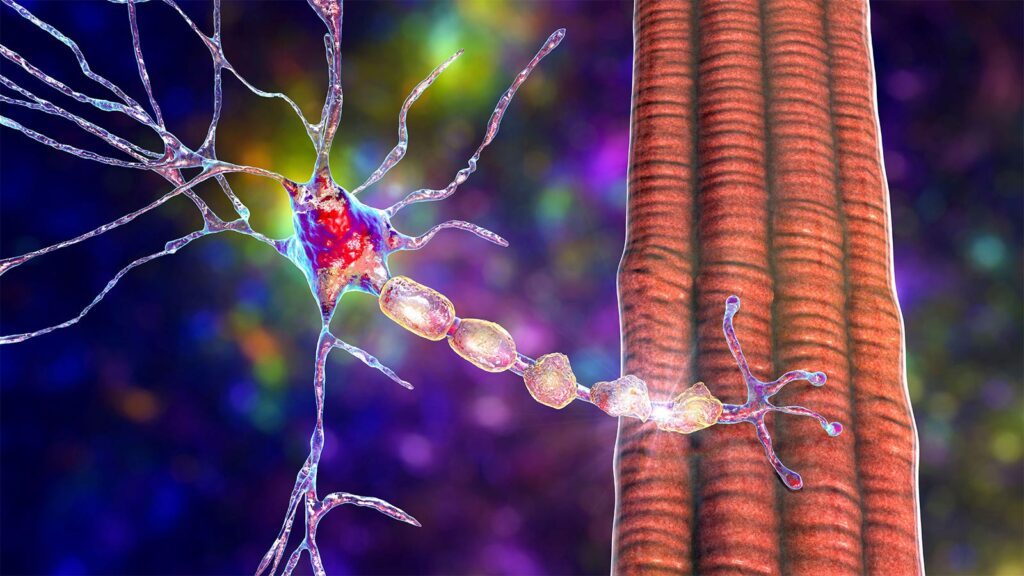Recent research has shed new light on multiple sclerosis (MS) in children, who make up about 3% to 5% of the MS population.
At one time, children were thought to not experience disability due to their higher capacity for repair, observed Maria Trojano, MD, of the University of Bari Aldo Moro in Italy.
Clinical trials and observational studies of adults have provided consistent evidence that disability accrual in MS can derive from both relapse-associated worsening (RAW) and progression independent of relapse activity (PIRA), Trojano noted.
In 2023, an analysis of Italian MS Registry participants that included 1,383 pediatric-onset MS patients “allowed us to shed some light on the contribution of PIRA and RAW on disability accrual in the pediatric MS population,” she said.
While PIRA was rare before age 18, pediatric-onset MS disease did not fully protect against it, the researchers found. “In fact, 40% of pediatric-onset patients experienced PIRA while they were still young, in approximately a decade of follow-up,” Trojano pointed out.
The study also showed that delayed treatment with disease-modifying drugs was associated with higher risk of PIRA (HR 1.16, P=0.04) and RAW (HR 1.75, P=0.001), while longer exposures to these drugs was protective.
“Early and accurate diagnosis and early treatment are essential in pediatric-onset MS patients,” Trojano stated. “They are at risk of irreversible disability accrual while they are still very young.”
Observational Studies
Historically, moderately effective therapies have been the main treatment in pediatric-onset MS, though high-efficacy treatments have been used frequently in adult patients. This year, a multicenter cohort study in France showed that highly effective drugs had benefits for pediatric MS patients as first-line treatment.
The study reported that children who started taking highly effective therapies had a 54% lower risk of first relapse at 5 years compared with those taking moderately effective therapies. Highly effective therapies included alemtuzumab (Lemtrada), fingolimod (Gilenya), mitoxantrone, cladribine (Mavenclad), natalizumab (Tysabri), ocrelizumab (Ocrevus), ofatumumab (Kesimpta), and rituximab. Both treatment strategies led to a reduced risk of first relapse within the first 2 years. The risk of discontinuation at 2 years was about six times higher with moderately effective therapies (HR 5.97), with a lack of efficacy and intolerance cited as common reasons for stopping.
Also in 2024, a registry-based study compared natalizumab, fingolimod, and injectable disease-modifying therapies in pediatric-onset MS. On the primary outcome of time to first relapse from index therapy initiation, those treated with natalizumab had a significantly lower risk of relapse than patients treated with injectable therapies (HR 0.15, P<0.001) or fingolimod (HR 0.37, P=0.049).
Rituximab, which is used off-label in MS, was assessed in a 2024 observational study of pediatric patients. Over a median follow-up of 20.9 months, annualized relapse rates decreased from 0.6 to 0.03, and 70% of patients displayed no evidence of disease activity.
Clinical Trials
Only one MS drug is approved specifically in the U.S. for pediatric patients, the sphingosine-1 phosphate receptor modulator fingolimod. A few others have been studied in clinical trials, and many are used off-label.
Fingolimod’s indication was expanded by the FDA in 2018 and the European Medicines Agency (EMA) to include relapsing MS patients ages 10 years and older. The pivotal trial compared fingolimod with interferon beta-1a in relapsing MS patients ages 10-17 for up to 2 years with a primary endpoint of annualized relapse rate. Results showed that adjusted annualized relapse rates for fingolimod and interferon beta-1a were, respectively, 0.12 and 0.67 (absolute difference 0.55 relapses; relative difference 82%, P<0.001).
Teriflunomide (Aubagio) was approved by the EMA for pediatric patients in 2021, but not by the FDA. The phase III double-blind TERIKIDS trial showed no difference in time to first confirmed clinical relapse with teriflunomide compared with placebo (HR 0.66, 95% CI 0.90-1.11, P=0.29). Teriflunomide reduced the number of new or enlarged T2 lesions versus placebo by 55% and the number of gadolinium-enhancing lesions by 75%.
An open-label extension study of TERIKIDS assessed continuous teriflunomide treatment. In 2024, researchers reported the estimated relapse risk for the teriflunomide/teriflunomide group was reduced by 38% compared with the placebo/teriflunomide group, but this was not significant (HR 0.62, P=0.11). Numbers of gadolinium-enhancing T1 were reduced by 43% (P=0.043) and new or enlarging T2 lesions were reduced by 49% (P=0.001). Two children in the teriflunomide/teriflunomide group developed pancreatitis.
Other recent trials in pediatric MS include the open-label phase III CONNECT trial, which compared dimethyl fumarate and interferon β-1a in patients ages 10 to 17 years. The proportion of participants who met the primary endpoint of no new or enlarging T2 MRI lesions at 96 weeks, respectively, was 16.1% and 4.9%. The drugs had similar safety profiles. A future paper will report the long-term outcomes of dimethyl fumarate in pediatric patients who completed the 96-week part of the trial.
An actively recruiting phase III trial, OPERETTA 2, is comparing the anti-CD20 agent ocrelizumab with fingolimod in relapsing-remitting pediatric MS patients. The trial is planned for 96 weeks with an open-label extension to 144 weeks.
Preliminary data for the OPERETTA 1 dosing study presented at the 2024 Consortium of Multiple Sclerosis Centers annual meeting showed safety and pharmacologic data consistent with what has been seen in adults. No relapses were seen in pediatric patients treated with either 300 mg or 600 mg ocrelizumab.
Disclosures
Trojano reported relationships with Biogen, Novartis, Roche, Merck, Bristol Meyer Squibb, and Genzyme.
Please enable JavaScript to view the

